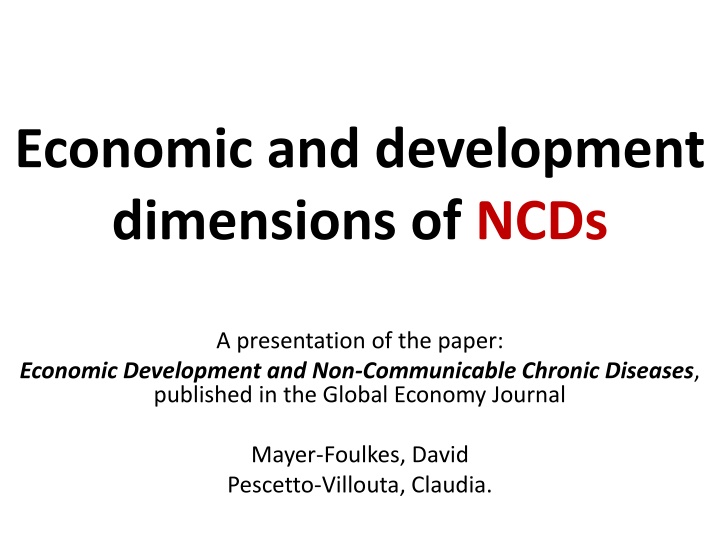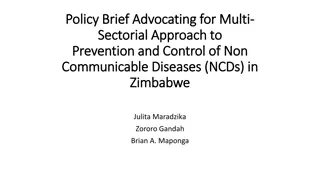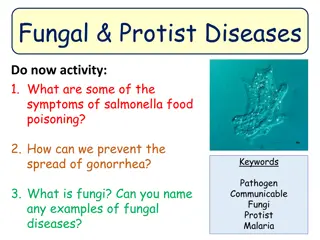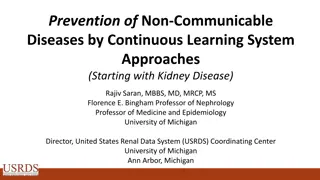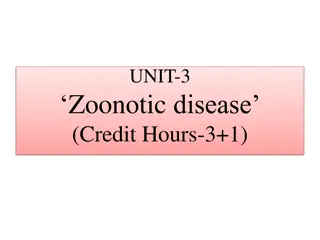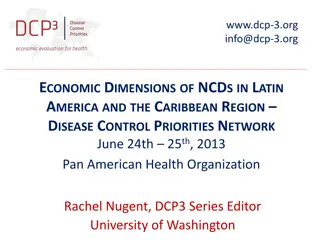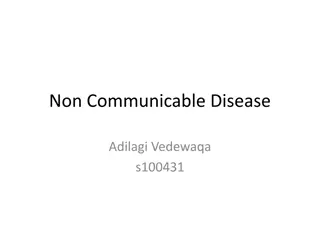Economic Development and Non-Communicable Diseases: Analyzing the Impact
This paper explores the economic dimensions of Non-Communicable Diseases (NCDs) such as alcohol, tobacco, junk food, and lack of exercise, which are largely preventable factors affecting economic development. Key concepts like unwholesome goods, demand and supply irrationality, and market power are analyzed alongside the societal impact of NCD risk factors. The study delves into the influence of non-Health Input Sectors on NCDs and discusses the prevalence of unwholesome goods in various sectors. The demand for unwholesome goods is examined, focusing on non-rationality, while the supply side considers market power, political economy, and lobbying.
Download Presentation

Please find below an Image/Link to download the presentation.
The content on the website is provided AS IS for your information and personal use only. It may not be sold, licensed, or shared on other websites without obtaining consent from the author.If you encounter any issues during the download, it is possible that the publisher has removed the file from their server.
You are allowed to download the files provided on this website for personal or commercial use, subject to the condition that they are used lawfully. All files are the property of their respective owners.
The content on the website is provided AS IS for your information and personal use only. It may not be sold, licensed, or shared on other websites without obtaining consent from the author.
E N D
Presentation Transcript
Economic and development dimensions of NCDs A presentation of the paper: Economic Development and Non-Communicable Chronic Diseases, published in the Global Economy Journal Mayer-Foulkes, David Pescetto-Villouta, Claudia.
Objective of this paper: To analyze NCDs from an economic perspective
NCD as an economic sickness Main NCD risk factors are manmade: alcohol, tobacco, junk food, lack of exercise hence NCDs result from individual and collective decisions We analyze the broad characteristics of the demand and supply of NCD risk factors Then we analyze the broad impact on society, in particular on economic development
Economic analysis of the sickness: the key concepts Unwholesome goods (bienes malsanos) Demand and supply irrationality market power political economy Human development
Main NCD factors are largely preventable poor diet tobacco NC NC D D alcohol salt low exercise
NCD Factors (outside the health sector) Non Health Input Sectors Unwholesome Sector Examples of non-Health-Sector NCD Factors Unwholesome food, including unwholesome baby food, alcohol, tobacco Unwholesome Externalities Work and urban living externalities, physical inactivity, pollution Wholesome Non-health Sector Healthy food, housing, exercise, sanitation, household health knowledge
Demand of unwholesome goods non-rationality
Supply of unwholesome goods market power, political economy lobbying producers government government producers consumers consumers A. Competitive markets B. Market power
Supply of unwholesome goods: global market power and political economy
Equilibrium Distortions in Unwholesome Economy
Human Development Long-term process of synergism between technological and physiological improvements, technophysio evolution (Fogel, 2002) Intergenerational feedback between the lifecycle and technological and social change Characterized by poverty trap mechanisms (life isn t perfect!)
Wholesome and Unwholesome Human Development
Stylized Impact of NCD on life cycle health, education, income and costs NCD costs include: health care costs, disease burden (e.g. disability-adjusted life years), education, income, overall human development
NCD impacts work through intergenerational and life cycle links
Additional costs: health sector Vaccinations, nutrition complements Medical prevention, screening, information campaigns Medical treatment, health insurance Administrative and surveillance capabilities, health knowledge and technology
Universal Health Care is part of Human Development
Conclusions NCDs can be understood as a social sickness driven by bad social/collective and individual choices in unwholesome living These are partly kept in place by profit making market power and political economy impacts on type and level of production in wholesome, unwholesome, and health sectors NCDs deeply impacts human development Healthy food initiative for the Americas Full policy evaluation is complex and needs to be implemented simultaneously with policy measures
